Physics and MathematicsProgram
Graduate School of Science

Program Overview
Master
 AWARD
AWARD
Master's Degree in Physics and Mathematics
 DURATION
DURATION
2Y
 SCHOOL(S)
SCHOOL(S)
Graduate School of Science
Doctor
 AWARD
AWARD
PhD in Physics and Mathematics
 DURATION
DURATION
3Y
 SCHOOL(S)
SCHOOL(S)
Graduate School of Science
Physics and Mathematics Program
Program Introduction
The Physics and Mathematics Graduate Program is jointly promoted by the Graduate School of Science and the Graduate School of Mathematics at Nagoya University. It integrates education and research across physics, mathematics, and geophysics, with participation from the Department of Physics and the Solar-Terrestrial Environment Laboratory. The program emphasizes a solid foundation in fundamental science, independent problem-solving, and international collaboration. Students benefit from an open and flexible curriculum, allowing interdisciplinary exchange while engaging in advanced research through lectures, seminars, and laboratory work. With a tradition of excellence recognized by Nobel laureates, the program aims to train researchers capable of making significant contributions in both fundamental and applied science.
The School of Science Physics Department provides diverse research opportunities across a wide range of fields, including astrophysical, elemental particle, materials and biophysics, and space-earth environmental research, allowing students to explore cutting-edge topics from molecular dynamics of biomolecules to galaxy evolution and heliospheric space science.
After graduation, Master’s students often continue their doctoral studies in the same laboratory, while others pursue opportunities at different universities in Japan or often abroad. Some graduates also choose to begin their careers in industry. Doctoral graduates typically advance to academic positions (post-doctoral positions) both in Japan and overseas, or take on professional roles in companies. Our graduates are well prepared to secure positions that align with their aspirations and are making significant contributions in their respective fields
Take a look at the List of Available Research Groups below to see the full list of available research topics.
List of Key Research Topics
Photobioenergetics / Nanomagnetism and Spintronics / Solid State Magnetic Resonance / Biomolecular Dynamics and Function / Cellular Signaling Biophysics / Magnetism / Theoretical Nonlinear Physics / Solid State Theory / Condensed-Matter Theory / Solid State Theory / Quantum Transport Theory / Theoretical Biophysics / Condensed-Matter Physics of Functional Materials / Computational Biophysics / Theoretical Elementary Particle Physics / Quark-Hadron Theory / Gravity and Particle Cosmology / Theoretical Plasma Physics / Cosmology / Theoretical Astronomy & Astrophysics / Science of Complexity (Theory) / Fundamental Particle Physics / High Energy Physics / Particle Properties / Radio Astronomy / Space Astronomy Laboratory (Infrared Astronomy Group) / Space Astronomy Laboratory (High-Energy Astronomy Group) / Galaxy Evolution / Science of Complexity (Experiment) / Atmospheric and Environmental Science / Space Science – Experiment / Solar and Space Physics Theory / Heliospheric High-Energy Physics / Heliospheric Plasma Physics
Related Links
How to Apply
The Physics and Mathematics Program at the Graduate School of Science conducts its first round of admissions in January. A second, rolling admission period may be offered in May, depending on the availability of seats remaining after the first round. The availability of the rolling admission will be announced in mid-April on the G30 Graduate School Admissions page.
Applicants are advised to contact their prospective research supervisor in advance to confirm whether the research group can accommodate an additional graduate student. If you do not receive a timely reply, we recommend contacting another research group.
Contact information for program professors can be found in the List of Available Research Groups above or by emailing the Graduate School directly. The Graduate School’s contact details are provided at the end of this page.
Please click the “Apply Here” icon above to view the full application instructions.
Tips for a succesful application :
- Contact intended research supervisor in advance
- Make sure to align research plan to the research field of supervising professor.
- Include examples of past research experience (papers, conference participations etc.)
- Submit your application before the application deadline so AO can check your application for missing documents.
Research Voice
Student from Thai
What sparked your interest to pursue research in your chosen program?
I am interested in understanding biological processes using fundamental knowledge of physics. Since understanding those processes is very important to the development of the cure for the diseases.

Poster presentation at the Annual Meeting of the Biophysical Society of Japan
What kind of research you do currently?
I am doing a research in biophysics field. The research is primarily related to using molecular dynamics simulations to observe biological mechanisms. Specifically, the study of a protein involving in circadian rhythms to see what happens to the protein in the molecular level.
What has been the most memorable research experience in your studies so far?
My most memorable experience was when I went to RIKEN Center for Computational Science in Kobe, for IUPAB2024-GENESIS-Workshop. I could get a hands-on tutorial on a molecular dynamic simulations program, GENESIS by the developers at Riken. Moreover, I also get to get a tour at Fugaku, the fastest supercomputer in Japan
What message would you like to share with someone considering pursuing research at Nagoya University?
Aside from research activities, there are also many activities you can experience. For example, club activities and events created by international student groups.

Entrance ceremony

Photo at Fugaku with friends from the workshop
Photo Gallery

Numerical simulation of sunspots

On the left a near-infrared image of a nearby galaxy, VV114, and the background monster barred spiral galaxy J0107a at z=2.467 captured by the James Webb Space Telescope is shown (credit: ESA/Webb, NASA & CSA, L. Armus & A. Evans). On the right, the stellar and molecular gas distribution of J0107a (credit: NASA, ALMA (ESO/NAOJ/NRAO), Huang et al. Nature 2025).

Installation of nuclear emulsion detectors for cosmic-ray muon radiography of Khufu’s Pyramid

The first neutrino interaction candidates detected by the nuclear emulsion detector at the Highest-Energy Collider, i.e., Large Hadron Collider (European Organization for Nuclear Research). In the left panel, the beam enters from the left; in the right panel, it comes from a direction perpendicular to the page. Each line segment indicates the trajectory of a particle produced in the reaction.

A new antiferroelectric material discovered, achieves boosted dielectric permittivity in an unconventional way

Atomic Force Microscopy for molecular-level elucidation of formation mechanism for next-generation functional material "Supramolecular Gel"

Dark matter direct detection experiment
Contact Info
Student Affairs Division
For the admission requirements and scholarship related inquiry, please contact the student affairs division of the school that you are applying for.
Office Hours
Mondays to Fridays* 9:00 am – 5:00 pm Japan standard Time (GMT+9) *Except Japanese National Holidays
Reseach Group
Applicants to the G30 Graduate Programs are required to contact their prospective research supervisor in advance to confirm whether the research group can accommodate an additional graduate student. If you do not receive a timely response, we recommend reaching out to another research group. Contact information for program professors can be found in the List of Available Research Groups below, or by contacting the Graduate School directly via email.


